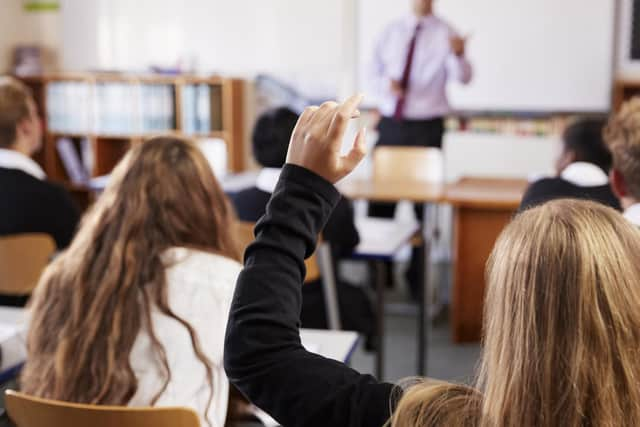Rota system limiting pupils in local lockdown areas could be introduced
The PA news agency looks at the measures that could be introduced for schools ahead of pupils returning to classrooms next week.
– What does the updated guidance say?
It sets out four tiers of restrictions for schools and colleges, to be used as an “absolute last resort” in areas under local lockdown.
Advertisement
Hide AdAdvertisement
Hide Ad

All schools and colleges are opening for the start of term next week, with those in areas which have local restrictions at tier one.
– What measures are in place for tier one?
All schools remain open in the first tier, with the only difference being that face coverings should be worn by staff and pupils when moving around, such as in corridors and communal areas.
Local authorities and directors of public health, alongside national Government, will be at the centre of deciding when to move out of tier one, according to the Department for Education (DfE).
– What happens in tier two?
Guidance says all other measures, including restrictions on other sectors, will be taken into consideration before restricting attendance in schools.
Advertisement
Hide AdAdvertisement
Hide AdIf these have been exhausted, extra measures should kick in at the second tier, when secondary schools move to a “rota system”.
– How does a rota system work?
The system will reduce how many people students come into contact with, helping to break transmission chains by pupils giving enough time at home for symptoms to become apparent, according to the guidance.
It says: “Schools should ideally operate a rota system that means pupils spend two weeks on-site followed by two weeks at home.
“However, schools can choose to operate a one-week rota (so, five days on-site, followed by nine days at home) if this is necessary for the effective delivery of the curriculum.”
– Does tier two apply to children in primary schools?
Advertisement
Hide AdAdvertisement
Hide AdNo, as the guidance says “primary schools and younger children play a limited role in transmission”.
– What is expected in tier three?
Tiers three and four introduce studying at home full time for wider groups of pupils.
Most secondary school students would study from home in the third tier, excluding vulnerable pupils, children of key workers and selected year groups.
– Then what happens in the final tier?
All nurseries, childminders, mainstream schools, colleges and other educational establishments can only allow vulnerable children and those whose parents are key workers to attend.
– If there is a positive case at a school, what happens?
Advertisement
Hide AdAdvertisement
Hide AdSchools should contact their local health protection team, which will carry out an assessment to confirm who had been in close contact with the positive case and ask them to quarantine for 14 days.
Any suspected coronavirus cases will need to self-isolate and get tested, according to the guidance.